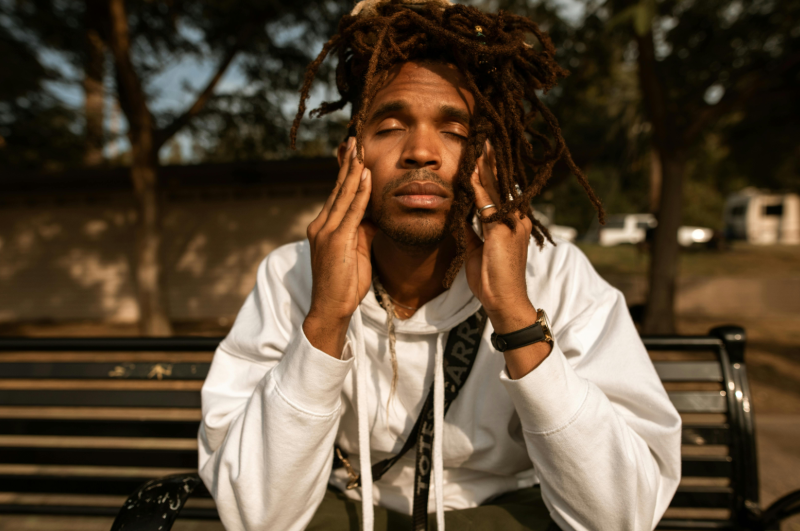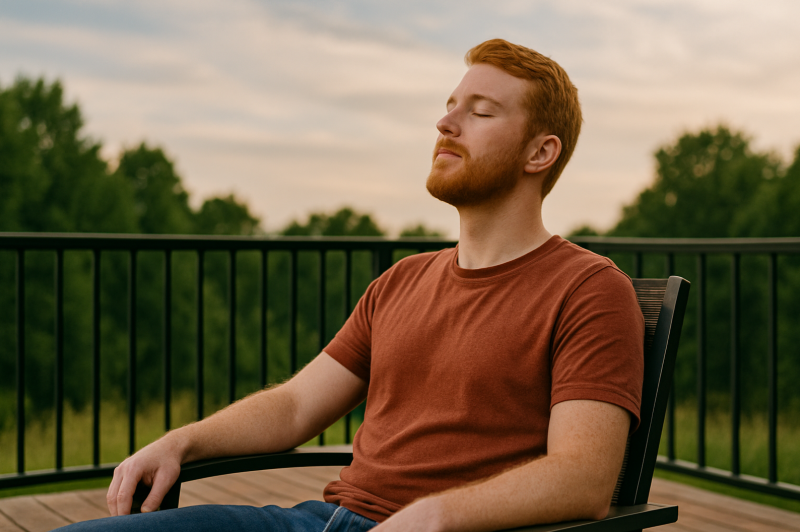
If you find yourself fixated on fears of death, you’re not alone. Here are gentle ways to ground your mind and return to the safety of the present moment.
By Sergio Toledo
Editor-in-Chief, Heed to Heal
Introduction
It’s late. The house is quiet. And out of nowhere—again—you’re thinking about death.
Your mind starts spinning: What happens when I die? What if I lose someone I love? How long do I really have? You try to distract yourself, but the thoughts won’t go away. And even though you know it’s anxiety, it still feels real. Still feels urgent. Still keeps you awake.
Death anxiety doesn’t always look like panic. Sometimes, it’s just a heavy hum in the background of your thoughts—a sense of dread that flares up when things get too quiet. But even when you can’t fix the fear, you can learn to soothe it. You can find ways to gently re-center your mind, reconnect with your body, and return to the safety of the present.
When You Just Need Some Relief
Trying to “fight” intrusive thoughts often backfires. It makes them stronger. But offering your mind something nourishing and present—rather than combative or forced—can help soften the grip of fear.
Instead of thinking of it as avoiding death anxiety, think of it as returning to life. These small shifts don’t erase the fear, but they offer breathing room.
Engage the Senses to Ground the Mind
When fear takes over, the body often moves into fight-or-flight mode—even if you’re just lying in bed. Sensory grounding can help calm your nervous system and remind your brain that you’re safe.
Try lighting a scented candle or holding something textured in your hands. Put on calming music or step outside and feel the air. Focusing on smell, touch, or sound can interrupt spirals by giving your brain something concrete to focus on.
Research has shown that sensory engagement—especially through rhythm, scent, and physical touch—can help reduce symptoms of anxiety and overthinking.¹
Move Gently, Not Frantically
When your thoughts feel too big to sit with, moving your body can help shift the energy.
Take a slow walk. Do a simple stretch routine. Water your plants. Movement sends a signal to your brain that you’re not stuck, that you’re still in control. According to the Anxiety & Depression Association of America, even low-impact exercise like walking or yoga can help calm the mind and body.²
The goal isn’t to “outrun” the fear—it’s to reclaim agency in your body.
Create a Ritual for the Hard Moments
Having a go-to calming routine can offer structure when death anxiety sneaks up. It might be as simple as:
- Turning on soft music
- Sitting with a warm drink
- Journaling your thoughts
- Reading a poem or spiritual passage that brings peace
These small, repetitive rituals signal comfort and predictability. Over time, your brain learns to associate them with safety.
Therapist Megan Devine often reminds us that “ritual brings order to chaos.” And fear of death—at its core—is fear of chaos, of the unknown.³
Healthy Distraction Isn’t Denial
Sometimes what you need isn’t to process or analyze the fear. Sometimes you just need something else to think about. And that’s okay.
Watch a favorite show. Listen to a podcast that makes you laugh. Call someone. Cook something. Rearranging your space or cleaning even one small thing can anchor you in the present and remind you that you’re still here—still living.
Healthy distraction isn’t avoidance. It’s what psychologist Rachel Menzies calls “an act of emotional regulation.”⁴
Final Thoughts
You’re not weak for wanting a break from heavy thoughts. You’re human. And the fact that you’re trying to care for your mind in the middle of this fear? That’s powerful.
You don’t have to solve death anxiety in one night—or ever fully. But you can learn to live alongside it, with tools that help you find your way back to calm.
Tonight, or whenever it hits again, remind yourself:
You’re safe.
You’re here.
And life is still happening in this moment.
References
- Reddan, M. C., et al. (2018). “Touch and Emotion Regulation: The Role of Oxytocin.” Current Opinion in Psychology.
- Anxiety and Depression Association of America. Exercise for Stress and Anxiety
- Devine, Megan. It’s OK That You’re Not OK. Sounds True, 2017.
- Menzies, Rachel E., and Darrell H. (2021). Free Yourself from Death Anxiety. Jessica Kingsley Publishers.
Originally published by Heed to Heal, 07.05.2025, under the terms of a Creative Commons Attribution-NonCommercial-NoDerivatives 4.0 International license.






